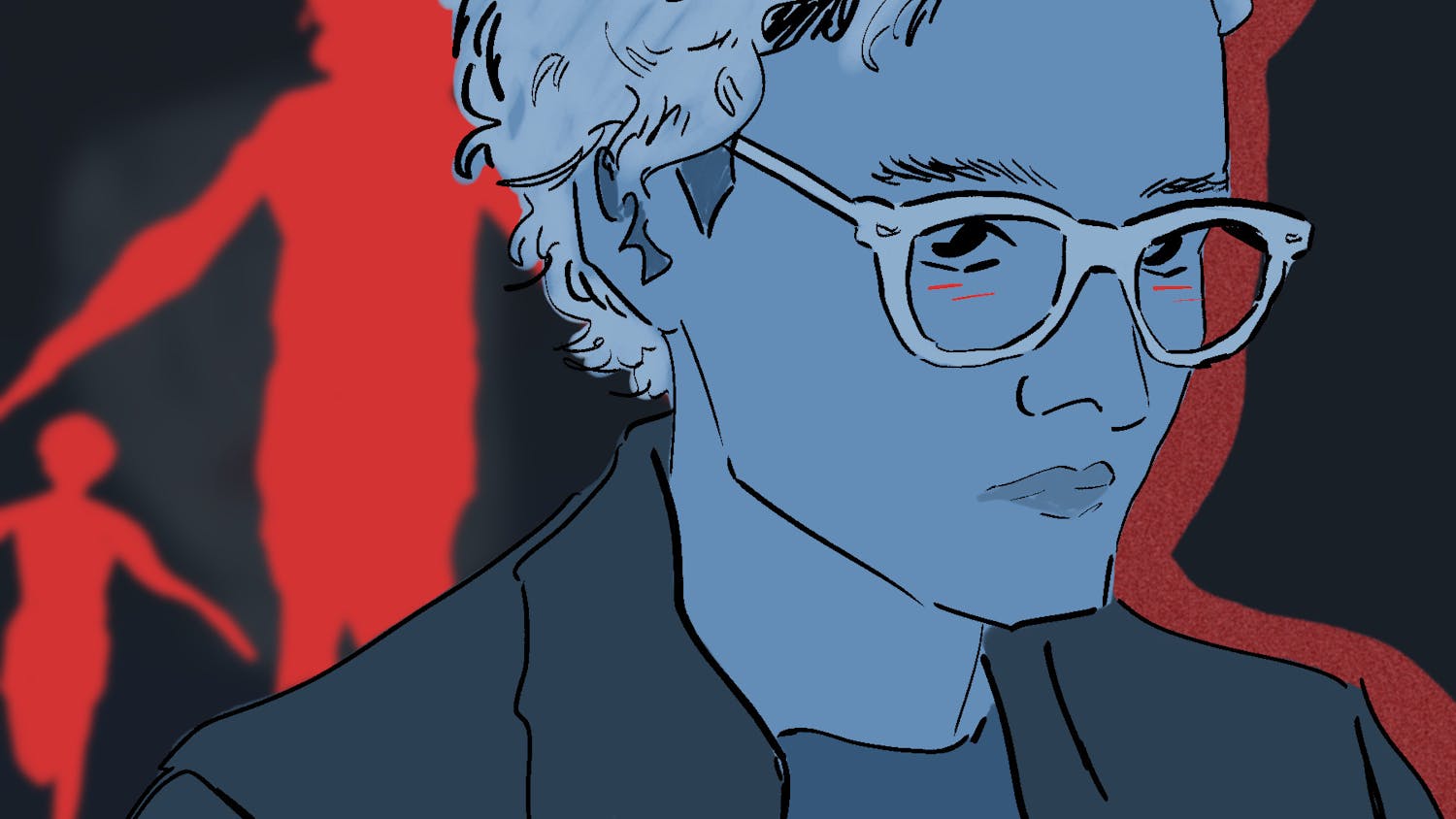Although the artwork, which was collected through open submission, represents a variety of media -- from photography and paintings to sculptures and moving statues -- the arrangement of the works by form and color along the gallery wall contributes to the exhibition's visual cohesion.
"Stairs" and "Stack" are two silver gelatin prints by Elizabeth Klinger '10, who is also the advertising and marketing coordinator for AREA, a student-run gallery. Although the photographs contain mostly dark hues, the geometrical juxtaposition of the shapes that form a stairway and stacks of paper capture the viewer's attention.
Among the more colorful works is a pair of collages, "Facts" and "An AIDS-Free Africa is Made Out of Condoms," by Ron Chavarria '11. In "Facts," a jumble of words like "death," "orphans" and "hope" fill an outline of the African continent, while "An AIDS-Free Africa" is a mirror image of the same outline filled with condoms. Several other student artists at the exhibition singled out Chavarria's piece as one that was especially thought provoking because of its direct message about the AIDS epidemic in Africa.
The exhibition housed three-dimensional pieces as well, such as the particularly eye-catching "An Accident Over Thermopylae" hanging in the corner of the gallery. The piece, which depicts a large bird constructed from wood, steel and zinc is the work of Kevin McGregor '11, who built the project for a class assignment that spanned three weeks.
"We had to use three different materials to tell a narrative," McGregor explained. "I looked into fables for ideas on storytelling, and I was inspired by Aesop's 'Eagle and the Arrow.'"
In the ironic short story, an eagle realizes that the arrow that kills him is furnished from his own feathers.
McGregor also mentioned that he referenced the legendary Battle of Thermopylae, on which the film "300" is based, in establishing a theme for his sculpture.
"In the Battle of Thermopylae, the Persians warned that they would shoot enough arrows to block out the sun," McGregor said. "I essentially interpreted the situation from the bird's point of view. I almost called this 'Consider the Birds' because it seems like the environment is not really a concern in war, even today."
Like McGregor, Dulce Shultz '09, president of AREA, used her artwork to provide commentary on societal priorities. Her untitled work consists of a set of two boxes containing neat rows and columns of small trinkets and other objects like a thimble, a cigarette and matches.
"When I was little, things like rocks held special value," Shultz said. "As we grow older, the things that we deem important become cliche. Cars and cash, for example, have largely recognized social value. I wanted to depict the hierarchy of objects in my artwork by categorizing them using a Cartesian coordinate system."
Whereas McGregor and Shultz have defined messages to deliver to viewers with their respective pieces, Sophie Hood '09 is an artist whose story is still evolving. Hood practices performance sculpture, which features moving statues. She literally becomes the artwork when she steps into one of her handmade costumes and moves around the gallery, interacting with viewers.
"I chose performance sculpture because it makes the art more approachable," Hood said. "It is much easier for people to interact with and relate to something that moves as opposed to still art that is kept on a pedestal."
Hood's performance at the exhibition opening on Saturday was composed of three characters, including a giant clam and yellow fungus. Hood said her goal is to evoke reactions from her viewers by adding an unexpected component to the gallery space. Her work was an example of the diverse talent showcased at the exhibition, drawing curious glances from viewers who were surprised by the imaginative medium.
According to Shultz and Klinger, the exhibition offers an opportunity to see the work of Dartmouth students that may otherwise never leave the studios or go unnoticed in small window spaces in the Hop's basement.
Shultz, on the other hand, noted the benefits that the exhibition provides for the student artists.
"Many people don't realize how much artists appreciate gallery space," she said. "It is incredibly difficult to find a gallery to represent you if you aren't well known, but Dartmouth provides the resources to create a student-curated space in which the artists can receive feedback."
The AREA Winter Art Exhibition will be open at the Top of the Hop until the middle of Spring term.




